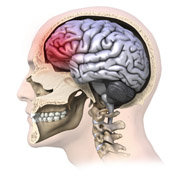Research and Innovation, UNL Office of

Center for Brain, Biology, and Behavior: Faculty Publications
Document Type
Article
Date of this Version
2016
Citation
Evolutionary Psychological Science (2016) 2:199–206
Abstract
Current evolutionary theories regarding the nature of hormonal responses to a variety of salient social stimuli are incomplete in yielding evidentiary support for their assertions. This study offers more nuanced evidence for the Tend-and- Befriend model of sex differences in responses to social stimuli. Participants were randomly assigned to a mortality salience prime or a control condition prior to viewing a video of an out-group threat or a video of infants crying. Cortisol and testosterone responses were assessed. The results showed that in mortality salience conditions, females showed significantly higher cortisol responses to infants crying compared to males. Further, in both mortality salience and control conditions, females showed significantly higher testosterone responses to the crying infants than males. Males showed a greater testosterone response to viewing an out-group threat. Mortality salience prime did not impact testosterone responses in either sex. Results point to a more nuanced representation of hormonal responses to social stimuli and the need for multisystem measurement.
Included in
Behavior and Behavior Mechanisms Commons, Nervous System Commons, Other Analytical, Diagnostic and Therapeutic Techniques and Equipment Commons, Other Neuroscience and Neurobiology Commons, Other Psychiatry and Psychology Commons, Rehabilitation and Therapy Commons, Sports Sciences Commons


Comments
Open Access licensed.